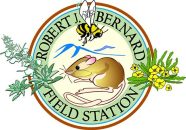Carrillo, Angie (1999)
Allozyme Variation within Coastal Sage Scrub Populations at the Bernard Biological Field Station Assayed by Cellulose Acetate Electrophoresis.
Bachelor of Arts, Pitzer College, Biology.
Advisor: Susan Schenk.
Within most populations, there is genetic variation on which evolutionary forces can act. Molecular genetics techniques such as gel electrophoresis can be used to obtain data on variation within populations. In this study, cellulose acetate electrophoresis was used to study genetic variation among coastal sage scrub populations at the Bernard Biological Field Station. The two loci studied were Leucine Aminopeptidase (LAP) and Glucose-6-Phosphate Isomerase (GPI). The first step was to find a population of coastal sage scrub that expressed the LAP or GPI loci. Thirteen coastal sage scrub species were screened for one or both loci. Three species, Eriogonum, Artemisia, and Chrysothamnus produced scorable data. Interpretation of the data indicated that there is no variation within the coastal sage scrub species tested at the Bernard Field Station.
